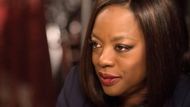Television has long established roles for women in society, deeply impacting these roles and other predictable roles as caregivers, love interests, or secondary figures in a male-driven narrative. The fact that women have some female characters who prove the old concepts wrong and have claimed that women can be powerful, if flawed, and dynamic protagonists in their own right. Those characters didn't just challenge stereotypes; they completely redefined them, often showcasing how strength may be exercised through intelligence, resilience, and even ambition or defiance of expectations.
It went from the commanding presence of Annalise Keating in the courtroom to the unpredictable, unapologetic villainy of Villanelle. These women shattered demeaning portrayals. Their roles weren't an afterthought; they were the story. Fleabag, Scandal, and Jessica Jones further stretched the boundaries of representation, going beyond offering something closer to a definition of dramatizations that are nuanced and complex to older ideals of morality or femininity.
More than that, these female characters caused real-life debates about gender, diversity, and representations in the media. They showed that female stories were important and probably revolutionary by veering the other way. These are ten unforgettable moments in which women on TV changed the definition of leading force.
1. Olivia Pope – Scandal

Olivia Pope broke television conventions by commanding a political drama as a commanding Black woman, an unusual presence on primetime television. She was not only powerful—she was deeply damaged, and this only added to her fascination. Scandal subverted racial and gender stereotypes by having Olivia portrayed both as super intelligent and emotionally damaged. Her romance with Fitz subverted classic romance tropes, and her influence transcended the realm of fiction. Her character influenced actual women in politics and law. Mainstream acceptance was brought by Kerry Washington's performance as Black female protagonists, demonstrating that complex, multi-dimensional women could conquer television without conforming to a preordained template.
2. Buffy Summers – Buffy the Vampire Slayer

Buffy Summers flipped the script on the "damsel in distress" trope by becoming the ultimate defender instead. As a teenage girl fighting supernatural forces, she showed that femininity and strength don't have to be at odds. Unlike male heroes, Buffy wasn't stoic—she loved, lost, and doubted herself, which made her extremely relatable. The show also addressed serious topics like consent, trauma, and female empowerment years before they became standard TV fare. Buffy's influence cannot be denied, having impacted countless powerful women to star as genre TV's leading ladies. Her legacy continues in contemporary heroines who embody emotional complexity and physical prowess, affirming that female characters can be warriors and human.
3. Cristina Yang – Grey’s Anatomy

Cristina Yang bucked every convention of a female television doctor. While other medical dramas relied on romantic plotlines, Cristina put ambition first, demonstrating that a woman's value isn't measured by marriage or motherhood. She was unapologetically intelligent, thriving in a profession traditionally ruled by men. Her departure from Grey's Anatomy, prioritizing a career-defining choice over love, was a powerful declaration of female autonomy. Her relationship with Meredith Grey also defied stereotypes, presenting two professional women who stood by each other without competitiveness. Cristina's path is a cultural landmark that has encouraged an entire generation of women to own ambition without apology or societal boundaries.
4. Fleabag – Fleabag

Fleabag seriously redefined the "likable female protagonist." Phoebe Waller-Bridge's creation was messy, selfish, and interminably unfiltered—a rare perspective in stories about women. By breaking the fourth wall to discuss her chaotic mind, she offered a brutally honest account of grief, s*x, and self-destruction. Unlike most of her female leads, she was not looking for redemption or justification from another person or story. The story was about accepting herself. Raw dark humor let the world see that women do not have to be virtuous or lovely to be worthy of empathy and storytelling. Fleabag soon reframed female storytelling, showing that imperfection is as genuine as anything and truly transformative.
5. Rosa Diaz – Brooklyn Nine-Nine

Rosa Diaz shattered stereotypes left and right; she was a Latina woman working in law enforcement who would not be stereotyped, pushed into roles of sidekick or love interest. Instead, she was fierce, guarded with her emotions, and very competent. When Rosa came out as bis*xual, it felt like a watershed moment for LGBTQ+ representation, particularly for Latinas on-screen. Her coming out was neither sensationalized nor treated as a tragedy; it was treated naturally as part of her character arc. Brooklyn Nine-Nine did justice to Rosa's identity in a nuanced manner, giving her character depth beyond her s*xuality.
6. Annalise Keating – How to Get Away with Murder

Annalise Keating as a character stronger than a basic definition was a powerhouse. It redefined the role Black women play in legal dramas. Unlike other female protagonists, she was not one to be appreciated; she was cold-blooded, fragile, and tremendously smart. Director Peter Nowalk and his team worked to intertwine issues of race, power, and identity into the series, with Annalise herself in the center of that palette. Her bis*xuality was another landmark in representation: it proved that a Black female lead of a network drama could be more than one-dimensional. Viola Davis’s Emmy win for the part became a landmark moment—not-a-moment—for Black actresses and diversity in mainstream television.
7. Jessica Jones – Jessica Jones

Jessica Jones redefined women in television as heroes by demonstrating strength through survival, as opposed to physical power. Unlike traditional superheroes, Jessica was highly flawed, dealing with PTSD from living through abuse at the hands of Kilgrave. Her story wasn't about vengeance; it was about taking back control. The show's brutally honest portrayal of trauma, consent, and healing distinguished it in a genre defined by men's stories. Jessica's refusal to be anyone's savior, sometimes even her own, made her one of television's most realistic and most heroic heroines in history.
8. Tuca & Bertie – Tuca & Bertie

Though animated shows routinely help sideline female friendships, Tuca and Bertie made it only its heart. Instead of pitting two women against each other, Tuca and Bertie really helped each other grow—a rarity in a television feature. Showcasing the problems of s*xual harassment, anxiety, and self-doubt, the series featured humorous surreal images, making exposure easier. Women have been championed to pitting comedy against seriousness, but Tuca & Bertie blurred the lines. Its cult following goes on to show that audiences are starving for the realities of messy, very personal stories about women supporting women.
9. Moira Rose – Schitt’s Creek

Moira Rose certainly broke that stereotype of older women relegated to minor supporting roles on television. She wasn't that one to fade into the shadows; she was flamboyant and eccentric, unapologetically herself. The journey from wealthy socialite to budding, struggling actress was all geared with resilience and indicated that reinventing oneself isn't for the young only. Her unique fashion sense and bizarre vocabulary became iconic, but beneath all that laughter, she is a loving, if hilariously unconventional, mother. Schitt's Creek gave her depth to be funny yet inspiring. She basically redefined what it meant to age on the TV screen—bold, glamorous, and wholly of her own making.
10. Villanelle – Killing Eve

Villanelle certainly broke the mold when it came to female villains, showing that they could be every bit as interesting as male ones. Instead of the traditional femme fatale, a woman who was either a sidekick or a love interest to a man villain, she was the story herself. Gradually, Killing Eve built her up so that she was more than just a borderline sociopath; she was so charming and vulnerable herself at times, even hilarious. Here was a complex relationship that redefined queer representation over and above tokenism with the fantasy cat-and-mouse chase between Villanelle and Eve Polastri.
